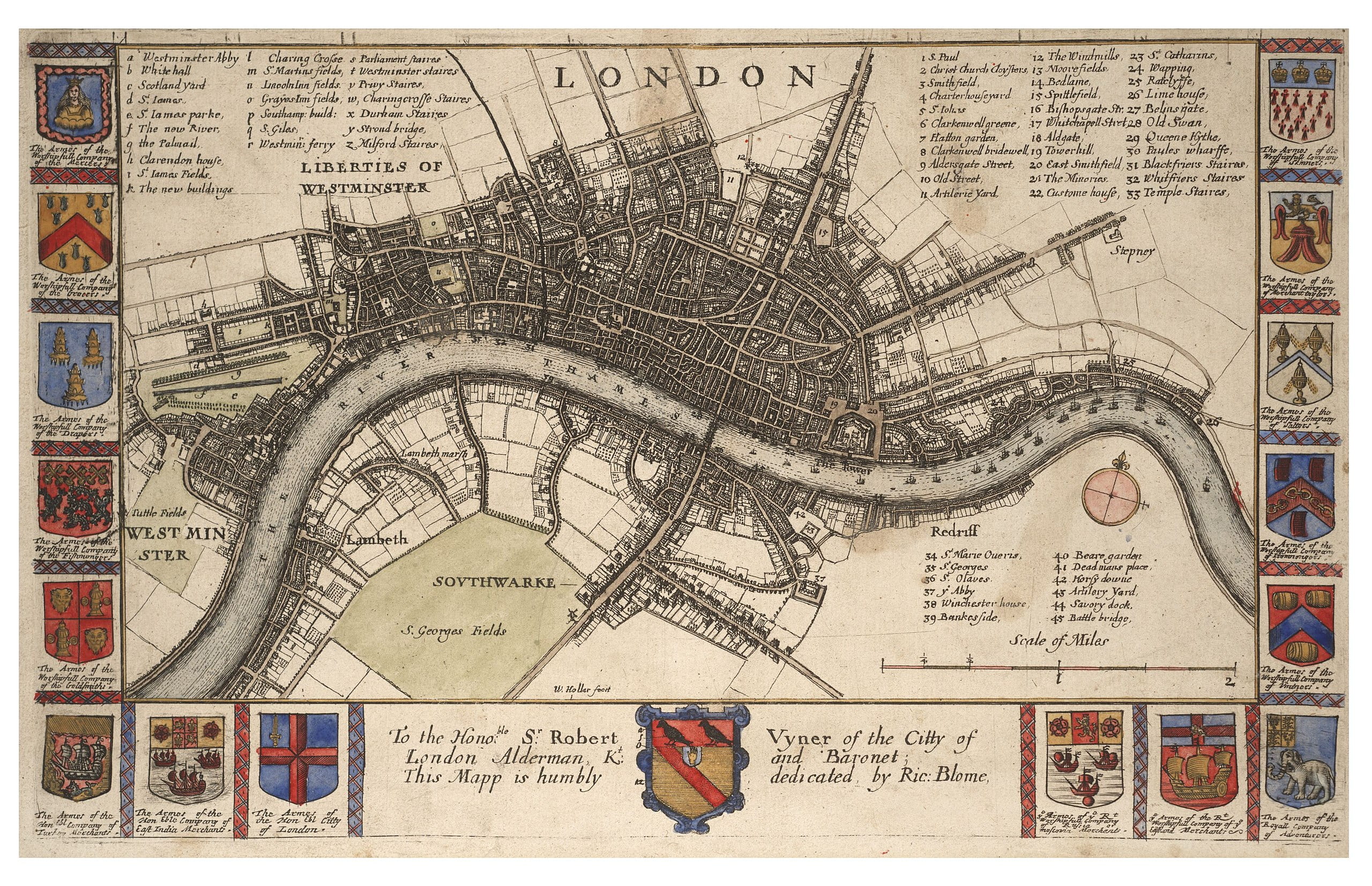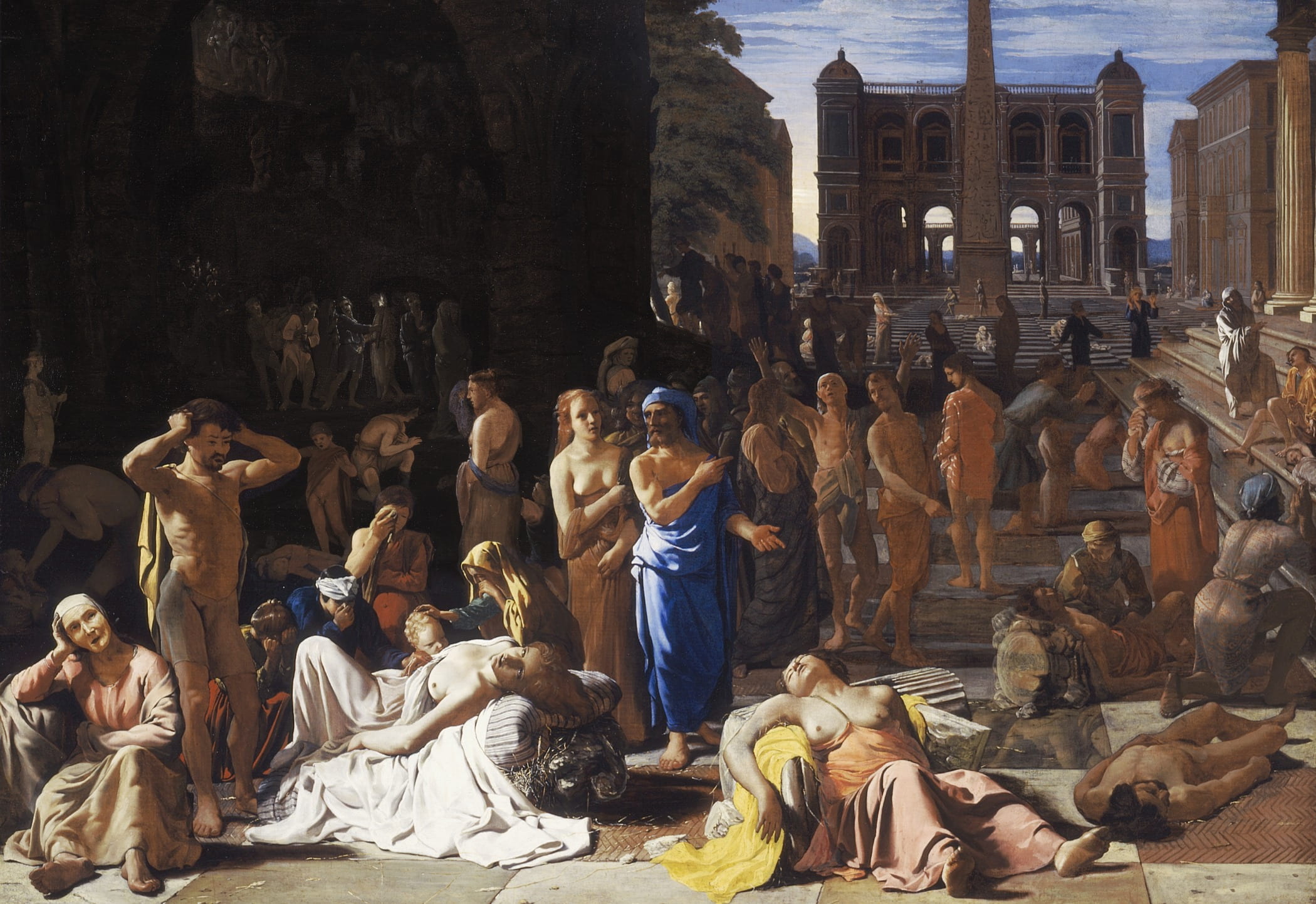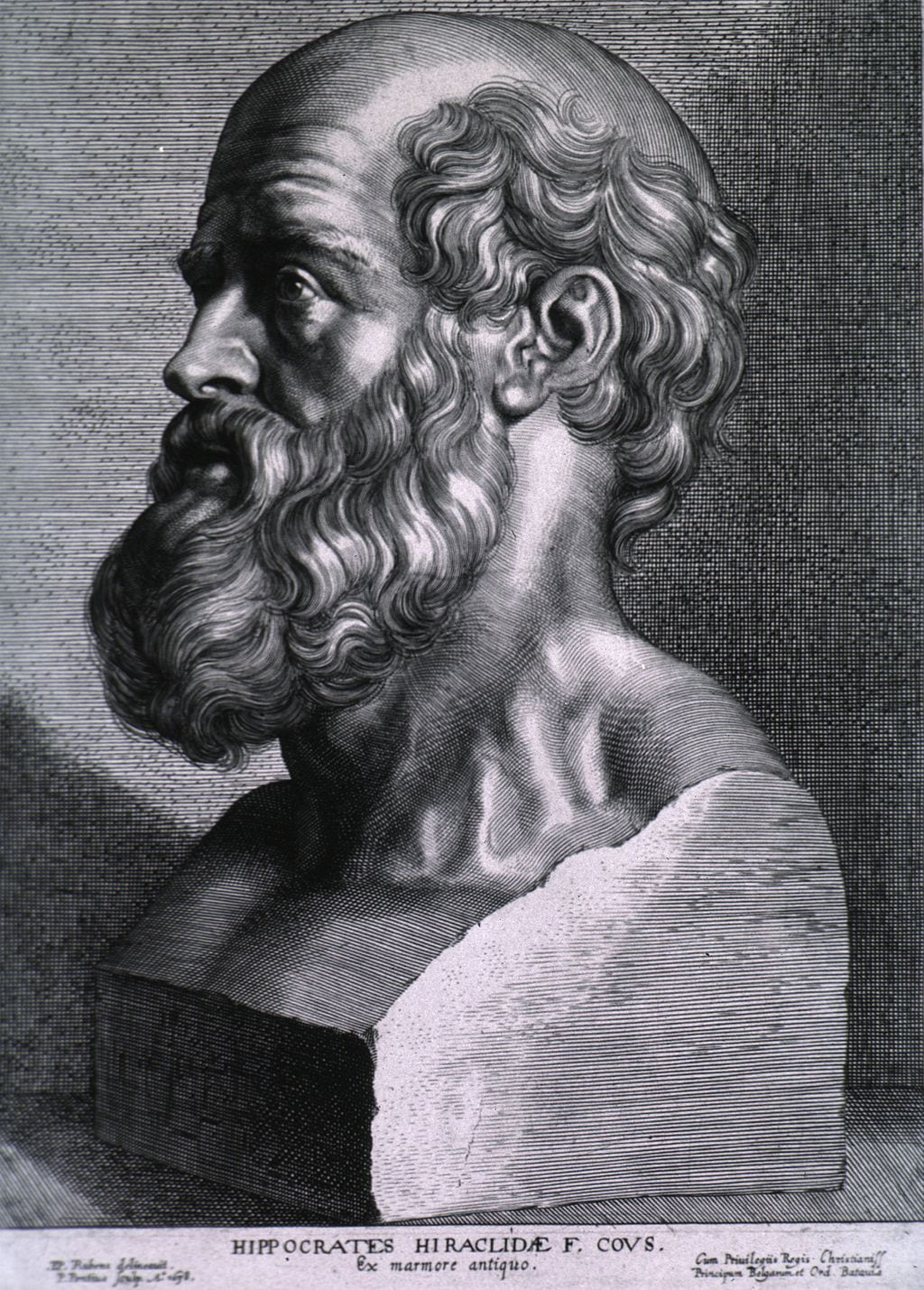By Editor Spencer J. Weinreich

Map of London by Wenceslas Hollar, c.1665
It is seldom recalled that there were several “Great Plagues of London.” In scholarship and popular parlance alike, only the devastating epidemic of bubonic plague that struck the city in 1665 and lasted the better part of two years holds that title, which it first received in early summer 1665. To be sure, the justice of the claim is incontrovertible: this was England’s deadliest visitation since the Black Death, carrying off some 70,000 Londoners and another 100,000 souls across the country. But note the timing of that first conferral. Plague deaths would not peak in the capital until September 1665, the disease would not take up sustained residence in the provinces until the new year, and the fire was more than a year in the future. Rather than any special prescience among the pamphleteers, the nomenclature reflects the habit of calling every major outbreak in the capital “the Great Plague of London”—until the next one came along (Moote and Moote, 6, 10–11, 198). London experienced a major epidemic roughly every decade or two: recent visitations had included 1592, 1603, 1625, and 1636. That 1665 retained the title is due in no small part to the fact that no successor arose; this was to be England’s outbreak of bubonic plague.
Serial “Great Plagues of London” remind us that epidemics, like all events, stand within the ebb and flow of time, and draw significance from what came before and what follows after. Of course, early modern Londoners could not know that the plague would never return—but they assuredly knew something about its past.
Early modern Europe knew bubonic plague through long and hard experience. Ann G. Carmichael has brilliantly illustrated how Italy’s communal memories of past epidemics shaped perceptions of and responses to subsequent visitations. Seventeenth-century Londoners possessed a similar store of memories, but their plague-time writings mobilize a range of pasts and historiographical registers that includes much more than previous epidemics or the history of their own community: from classical antiquity to the English Civil War, from astrological records to demographic trends. Such richness accords with the findings of the formidable scholarly phalanx investigating “the uses of history in early modern England” (to borrow the title of one edited volume), which informs us that sixteenth- and seventeenth-century English people had a deep and sophisticated sense of the past, instrumental in their negotiations of the present.
Let us consider a single, iconic strand in this tapestry: invocations of the Plague of Athens (430–26 B.C.E.). Jacqueline Duffin once suggested that writing about epidemic disease inevitably falls prey to “Thucydides syndrome” (qtd. in Carmichael 150n41). In the centuries since the composition of the History of the Peloponnesian War, Thucydides’s hauntingly vivid account of the plague (II.47–54) has influenced writers from Lucretius to Albert Camus. Long lost to Latin Christendom, Thucydides was slowly reintegrated into Western European intellectual history beginning in the fifteenth century. The first (mediocre) English edition appeared in 1550, superseded in 1628 with a text by none other than Thomas Hobbes. For more than a hundred years, then, Anglophone readers had access to Thucydides, while Greek and Latin versions enjoyed a respectable, if not extraordinary, popularity among the more learned.

Michiel Sweerts, Plague in an Ancient City (1652), believed to depict the Plague of Athens
In 1659, the churchman and historian Thomas Sprat, booster of the Royal Society and future bishop of Rochester, published The Plague of Athens, a Pindaric versification of the accounts found in Thucydides and Lucretius. Sprat’s Plague has been convincingly interpreted as a commentary on England’s recent political history—viz., the Civil War and the Interregnum (King and Brown, 463). But six years on, the poem found fresh relevance as England faced its own “too ravenous plague” (Sprat, 21).The savvy bookseller Henry Brome, who had arranged the first printing, brought out two further editions in 1665 and 1667. Because the poem was prefaced by the relevant passages of Hobbes’s translation, an English text of Thucydides was in print throughout the epidemic. It is of course hardly surprising that at moments of epidemic crisis, the locus classicus for plague should sell well: plague-time interest in Thucydides is well-attested before and after 1665, in England and elsewhere in Europe.
But what does the Plague of Athens do for authors and readers in seventeenth-century London? As the classical archetype of pestilence, it functions as a touchstone for the ferocity of epidemic disease and a yardstick by which the Great Plague could be measured. The physician John Twysden declared, “All Ages have produced as great mortality and as great rebellion in Diseases as this, and Complications with other Diseases as dangerous. What Plague was ever more spreading or dangerous than that writ of by Thucidides, brought out of Attica into Peloponnesus?” (111–12).
One flattering rhymester welcomed Charles II’s relocation to Oxford with the confidence that “while Your Majesty, (Great Sir) shines here, / None shall a second Plague of Athens fear” (4). In a less reassuring vein, the societal breakdown depicted by Thucydides warned England what might ensue from its own plague.
Perhaps with that prospect in mind, other authors drafted Thucydides as their ally in catalyzing moral reform. The poet William Austin (who was in the habit of ruining his verses by overstuffing them with classical references) seized upon the Athenians’ passionate devotions in the face of the disaster (History, II.47). “Athenians, as Thucidides reports, / Made for their Dieties new sacred courts. / […] Why then wo’nt we, to whom the Heavens reveal / Their gracious, true light, realize our zeal?” (86). In a sermon entitled The Plague of the Heart, John Edwards enlisted Thucydides in the service of his conceit of a spiritual plague that was even more fearsome than the bubonic variety:
The infection seizes also on our memories; as Thucydides tells us of some persons who were infected in that great plague at Athens, that by reason of that sad distemper they forgot themselves, their friends and all their concernments [History, II.49]. Most certain it is that by the Spirituall infection men forget God and their duty. (8)
Not dissimilarly, the tailor-cum-preacher Richard Kingston paralleled the plague with sin. He characterizes both evils as “diffusive” (23–24) citing Thucydides to the effect that the plague began in Ethiopia and moved thence to Egypt and Greece (II.48).
On the supposition that, medically speaking, the Plague of Athens was the same disease they faced, early modern writers treated it as a practical precedent for prophylaxis, treatment, and public health measures. Thucydides was one of several classical authorities cited by the Italian theologian Filiberto Marchini to justify open-field burials, based on their testimony that wild animals shunned plague corpses (Calvi, 106). Rumors of plague-spreading also stoked interest in the History, because Thucydides records that the citizens of Piraeus believed the epidemic arose from the poisoning of wells (II.48; Carmichael, 149–50).

Peter Paul Rubens, Hippocrates (1638)
It should be noted that Thucydides was not the only source for early modern knowledge about the Plague of Athens. One William Kemp, extolling the preventative virtues of moderation, tells his readers that it was temperance that preserved Socrates during the disaster (58–59). This anecdote comes not from Thucydides, but Claudius Aelianus, who relates of the philosopher’s constitution and moderate habits, “[t]he Athenians suffered an epidemic; some died, others were close to death, while Socrates alone was not ill at all” (Varia historia, XIII.27, trans. N. G. Wilson). (Interestingly, 1665 saw the publication of a new translation of the Varia historia.) Elsewhere, Kemp relates how Hippocrates organized bonfires to free Athens of the disease (43), a story that originates with the pseudo-Galenic On Theriac to Piso, but probably reached England via Latin intermediaries and/or William Bullein’s A Dialogue Against the Fever Pestilence (1564). Hippocrates’s name, and supposed victory over the Plague of Athens, was used to advertise cures and preventatives.
With the exception of Sprat—whose poem was written in 1659—these are all fleeting references, but that is in some sense the point. The Plague of Athens, Thucydides, and his History had entered the English imaginary, a shared vocabulary for thinking about epidemic disease. To quote Raymond A. Anselment, Sprat’s poem (and other invocations of the Plague of Athens) “offered through the imitation of the past an idea of the present suffering” (19). In the desperate days of 1665–66, the mere mention of Thucydides’s name, regardless of the subject at hand, would have been enough to conjure the specter of the Athenian plague.
Whether or not one built a public health plan around “Hippocrates’s” example, or looked to the History of the Peloponnesian War as a guide to disease etiology, the Plague of Athens exerted an emotional and intellectual hold over early modern English writers and readers. In part, this was merely a sign of the times: sixteenth-century Europeans were profoundly invested in the past as a mirror for and guide to the present and the future. In England, the Great Plague came at the height of a “rage for historical parallels” (Kewes, 25)—and no corner of history offered more distinguished parallels than classical antiquity.
And let us not undersell the affective power of such parallels. The value of recalling past plagues was the simple fact of their being past. Awful as the Plague of Athens had been, it had eventually passed, and Athens still stood. Looking backwards was a relief from a present dominated by the epidemic, and from the plague’s warped temporality: the interruption of civic and liturgical rhythms and the ordinary cycle of life and death. Where “an epidemic denies time itself” (Calvi, 129–30), history restores it, and offers something like orientation—even, dare we say, hope.



